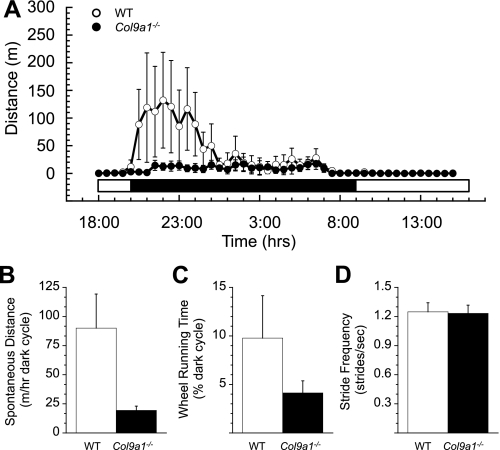Fig. 5.
Spontaneous wheel running behavior and kinematics related to the frequency of joint loading. A: WT mice showed increase wheel running activity during the first half of the dark cycle compared with Col9a1−/− mice, but there was no difference in wheel activity during the second half of the dark cycle. Average data for a 72-h time period are plotted for the total distance moved for each half hour of the day (bar beneath the plot indicates the light/dark periods). B: Col9a1−/− mice ran shorter distances during the dark cycle compared with WT mice, although this difference was not significant. C: there was also a nonsignificant trend for reduced activity time, expressed as a percent of the dark period, in Col9a1−/− mice compared with WT mice. D: stride frequencies recorded during approximately speed-matched wheel locomotion were similar in Col9a1−/− and WT mice. Values are means ± SE.

